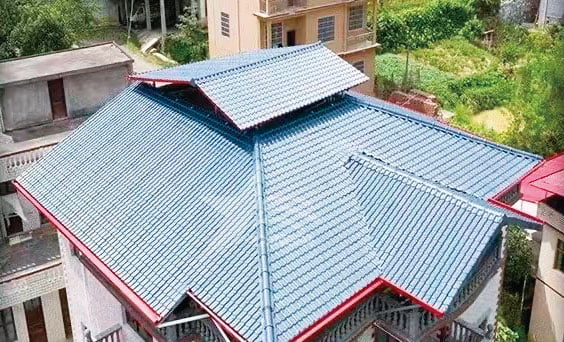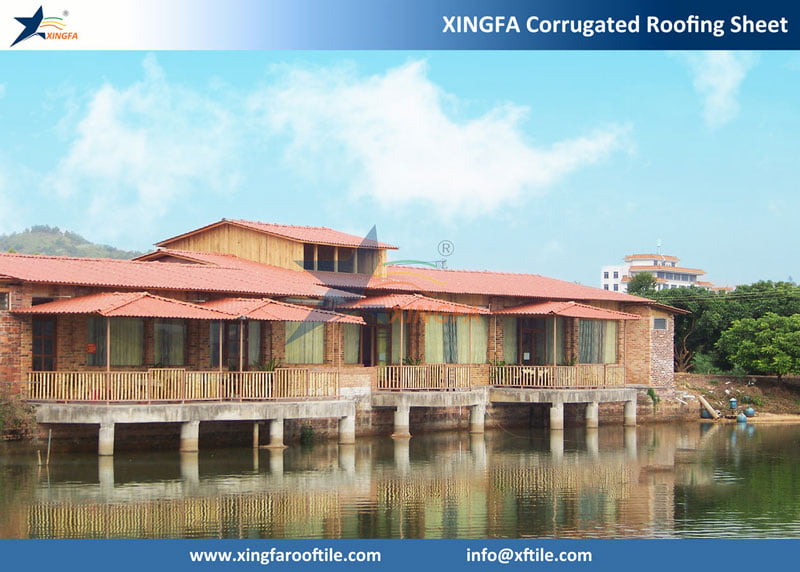With the frequent occurrence of climate change and global natural disasters, typhoons have become a common natural disaster, causing significant losses to many regions. Especially in coastal areas, typhoons often bring strong winds and heavy rains, causing extensive damage to the roofs and walls of buildings. Therefore, when selecting roofing materials, it is particularly important for these typhoon-prone areas to choose materials that can withstand typhoons. So, can synthetic resin tiles withstand typhoons? Let’s explore this today.

Synthetic resin tiles are made from highly weather-resistant engineering resin ASA, with excellent properties such as weather resistance, durability, acid and alkali resistance, heat resistance, and UV resistance. In addition, they also have good impact resistance and tensile strength, with excellent load-bearing capacity, suitable for various building components such as roofs, walls, skylights, factories, and garages.

Compared to traditional color steel plates, the advantages of synthetic resin tiles are obvious. Firstly, in terms of durability, the surface of colored steel plates is often corroded by the natural environment, leading to rust and corrosion, significantly reducing their lifespan. However, synthetic resin tiles, using special materials, can withstand various harsh environments without rust or corrosion issues even with long-term use. Secondly, in terms of wind resistance, synthetic resin tiles have better toughness and impact resistance, making them more capable of withstanding typhoons and other natural disasters compared to colored steel plates.

Furthermore, synthetic resin tiles also have better heat insulation and sound insulation properties, effectively preventing large temperature differences between indoors and outdoors and reducing noise pollution. Additionally, the color of synthetic resin tiles can be customized according to customer requirements, enhancing the appearance of buildings, meeting functional requirements, and adding decorative value to the structures.
